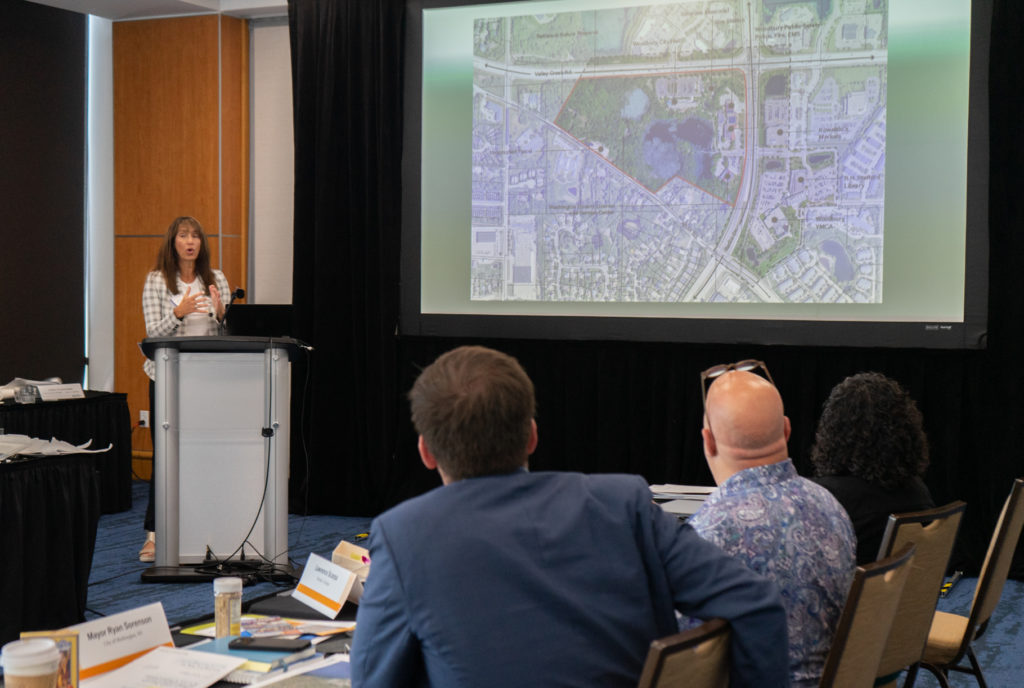There is no question that Miami 21 wouldn’t be what it is today but for my experience with the Institute. The Institute showed me how important city design is and in that discussion my convictions for Miami 21 [were] crystallized and made me an even stronger advocate for what I wanted to accomplish.
Mayor Manny Diaz (2001-2009)
2004 MICD 34
Background
Located on the southeast Atlantic coast of Florida, Miami’s bustling urban landscape is fueled by the city’s gargantuan banking, tourism, and higher education industries. In the mid-2000s, the University of Miami (UM) was committed to an aggressive $550 million development plan to make its Miller School of Medicine the best in the region and more competitive nationally.
Challenge
Recognizing the opportunity for the university to become an anchor institution in the community and for this project to bring about sweeping changes in the surrounding neighborhoods, UM had joined forces with the city in a revitalization initiative called the Miami Partnership. Former Mayor Manny Diaz presented the UM case study at the Mayors’ Institute in 2005, seeking recommendations on the site plan and design guidelines for the new medical campus.
Impact
Attending the Institute had a far-reaching impact on Diaz’s leadership above and beyond the design triage performed on his case study project. The experience at MICD has fundamentally transformed the mayor, now author of Miami Transformed: Rebuilding America One Neighborhood, One City at a Time, into an outspoken supporter of urban design and livable communities. “MICD woke that feeling inside of me in a way that was remarkable. I spent a significant portion of my two terms really focused on design,” Mayor Diaz said emphatically. He elaborated, “The quality of the resource professionals and the ensuing discussions exceeded my high expectations and gave me some valuable insight into the physical future of my city.” Referring to Miami 21, the highly publicized, citywide zoning reform legislation that embraces the tenets of new urbanism and smart growth, he asserted, “There is no question that Miami 21 wouldn’t be what it is today but for my experience with the Institute. The Institute showed me how important city design is and in that discussion my convictions for Miami 21 [were] crystallized and made me an even stronger advocate for what I wanted to accomplish.”



